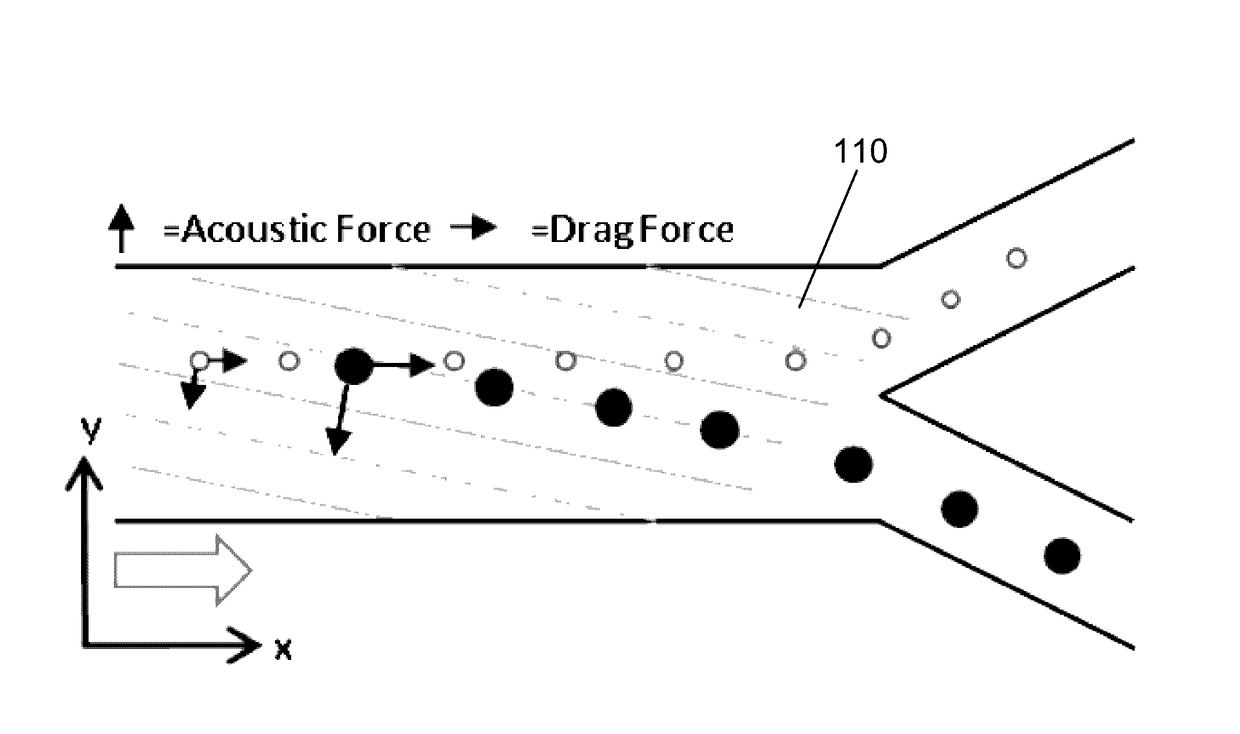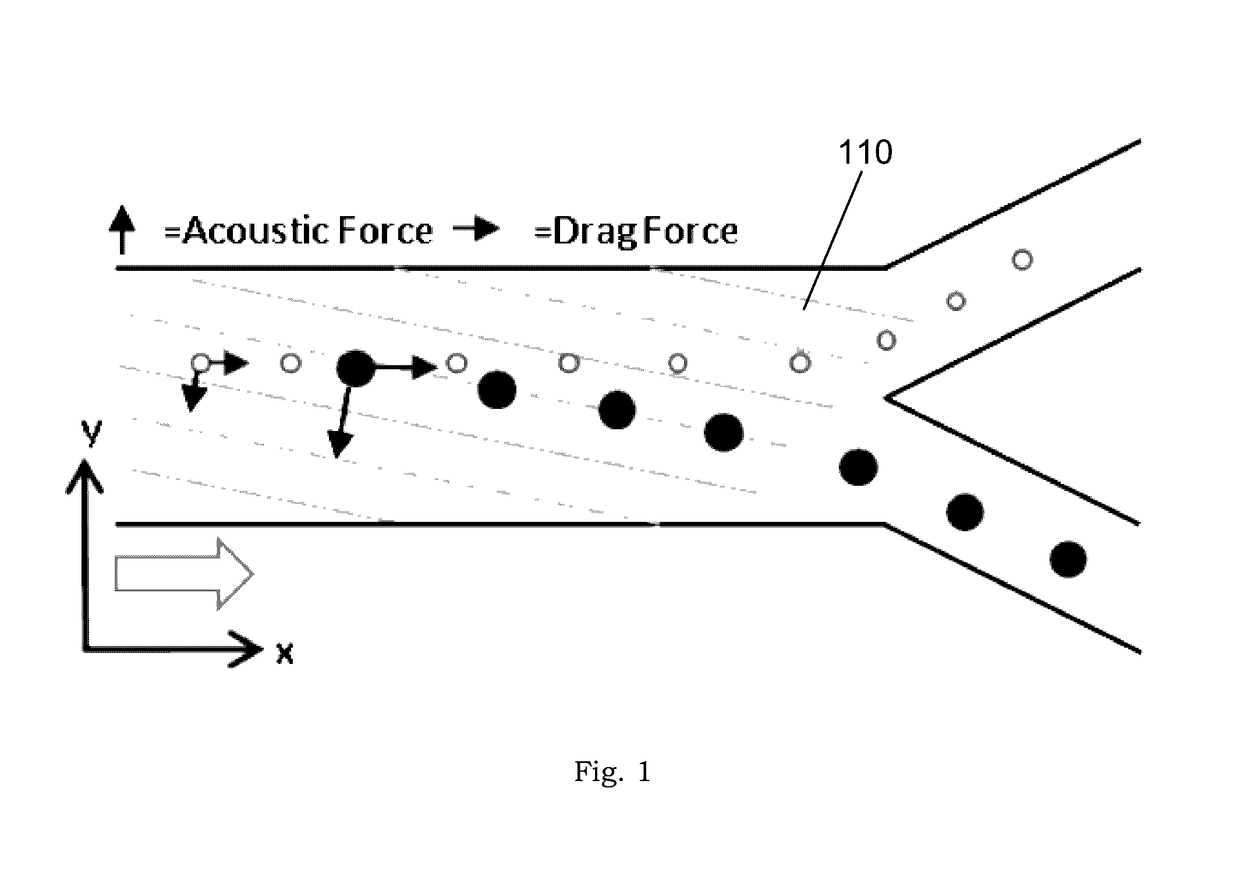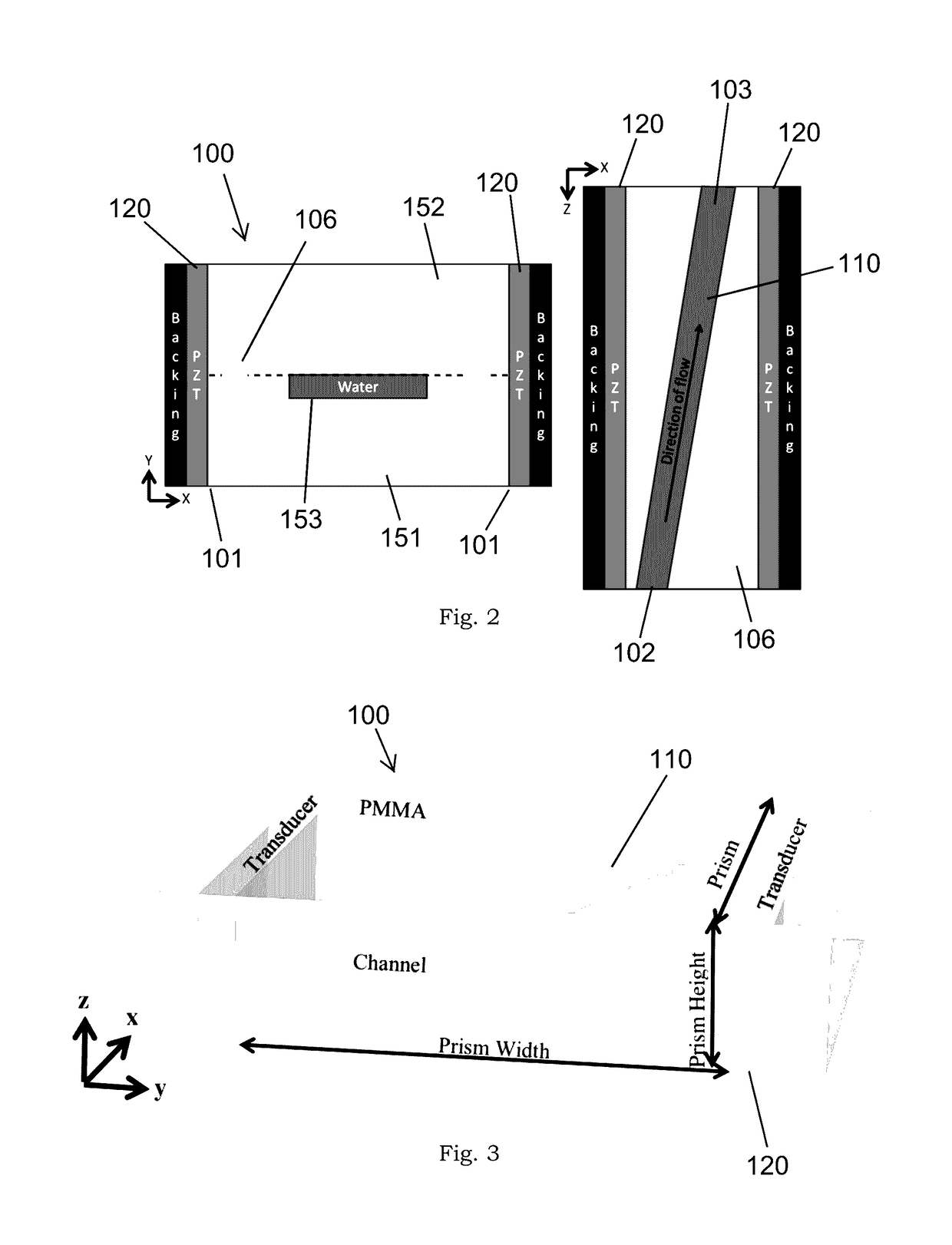Device for the Separation of Particles Using a Bulk Acoustic Wave Field
a particle separation and bulk acoustic wave technology, applied in the field of particle separation, can solve the problems of affecting the cell physiology and viability, requiring contact between the particle, and limiting the volumetric flow rate of the technique,
- Summary
- Abstract
- Description
- Claims
- Application Information
AI Technical Summary
Benefits of technology
Problems solved by technology
Method used
Image
Examples
Embodiment Construction
[0017]According to one embodiment, the separation device comprises a prism 100, a microfluidic channel 110 within the prism 100, and a pair of bulk acoustic wave generators 120 attached to the prism. As shown in FIG. 2, the prism 100 is generally rectangular in shape and is constructed from poly (methyl methacrylate) (PMMA) in one embodiment, although other rigid polymers or materials can be used. The acoustic wave generators 120 are coupled to opposing external sides 101 of the prism 100 and are used to create standing or traveling waves within the microchannel 110. However, separation along node lines is more effective in standing wave environments. To create standing waves, the acoustic wave generators 120 are positioned parallel to each other on opposing sides of the channel 110. In one embodiment, the acoustic wave generators 120 are lead zirconate titanate (PZT) transducers; however, other types of bulk acoustic wave generators can be used. FIGS. 2-3 depict alternative embodim...
PUM
| Property | Measurement | Unit |
|---|---|---|
| size | aaaaa | aaaaa |
| angle | aaaaa | aaaaa |
| angle | aaaaa | aaaaa |
Abstract
Description
Claims
Application Information
 Login to View More
Login to View More - R&D
- Intellectual Property
- Life Sciences
- Materials
- Tech Scout
- Unparalleled Data Quality
- Higher Quality Content
- 60% Fewer Hallucinations
Browse by: Latest US Patents, China's latest patents, Technical Efficacy Thesaurus, Application Domain, Technology Topic, Popular Technical Reports.
© 2025 PatSnap. All rights reserved.Legal|Privacy policy|Modern Slavery Act Transparency Statement|Sitemap|About US| Contact US: help@patsnap.com



